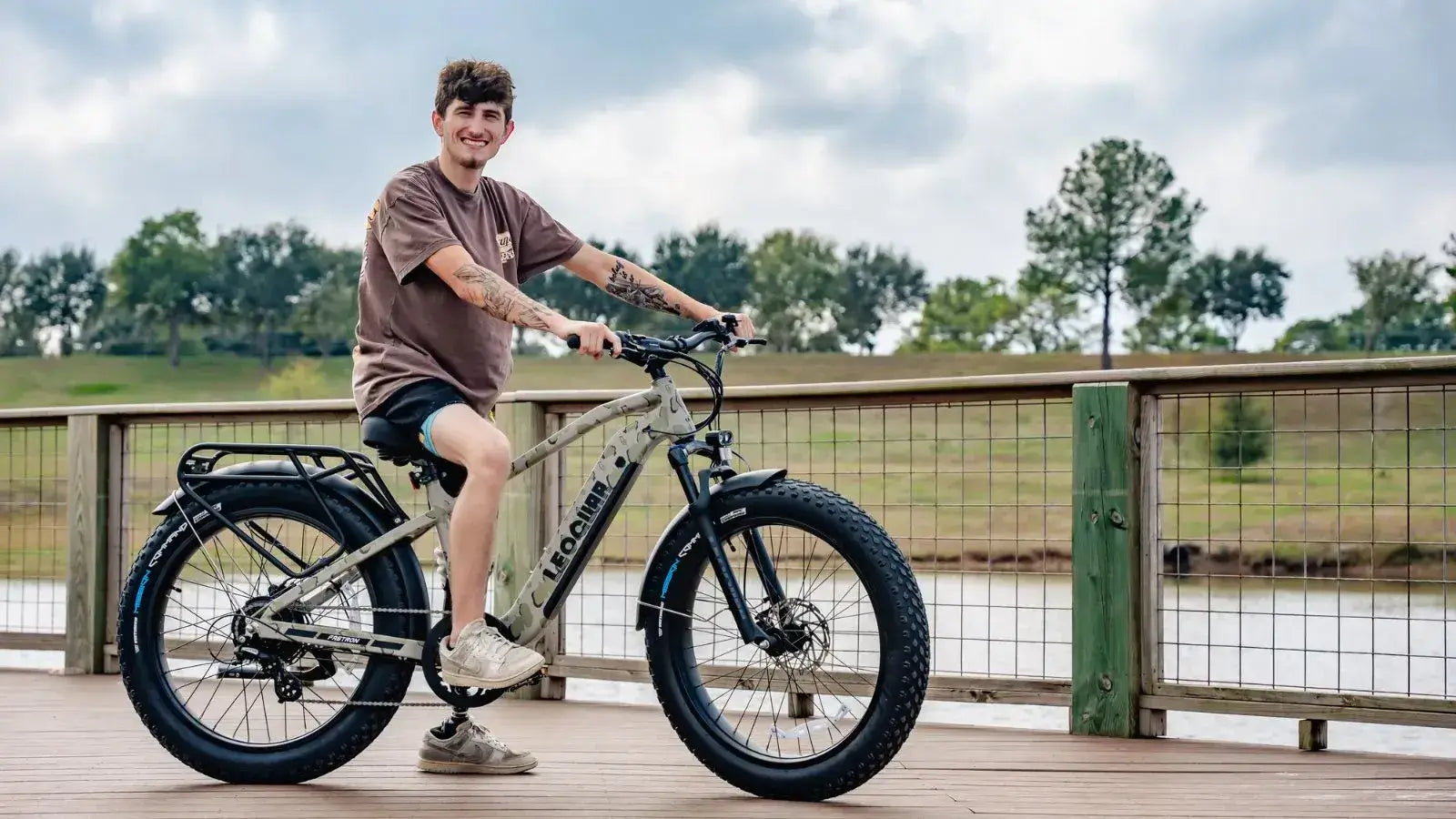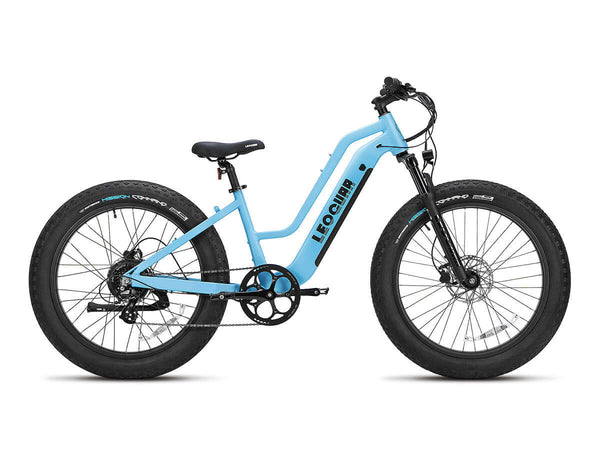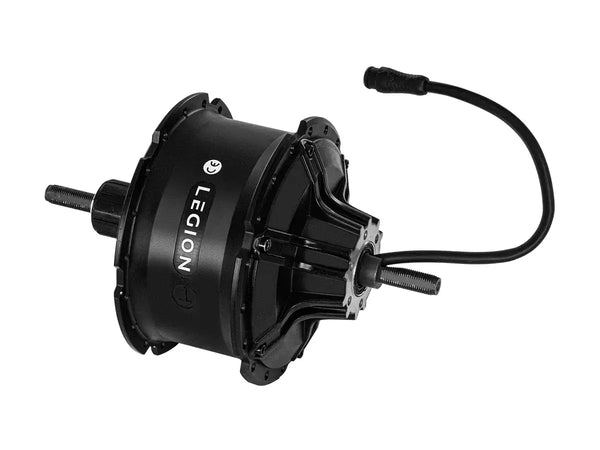
500W vs 750W Ebike Motor: Ultimate Power Guide
The Quick Answer
Choosing an e-bike motor can feel complex. But it boils down to matching power to your riding style. To immediately answer the core question of 500W vs 750W vs 1000W, here is a quick breakdown.
This summary gives you the essential information. The rest of this guide will dive into the details. The goal is to get you on the perfect bike for your needs.
500W: This is the versatile all-rounder. It's perfect for city commuting, navigating moderate hills, and finding the ideal balance between useful power and excellent battery efficiency. Think of it as the reliable and economical sedan of the e-bike world.
750W: This is the power-up. It's ideal for heavier riders, tackling steeper hills with ease, and enjoying quicker acceleration. A 750W motor provides a more thrilling ride and often represents the legal power limit for street-legal e-bikes in many areas.
1000W+: This is the off-road beast. These motors are built for extreme terrain, hauling heavy cargo, and achieving maximum performance. They are often legally classified as off-road vehicles, not standard bicycles, and are meant for private land or dedicated trails.
Understanding the Numbers
To truly master the e-bike motor debate, you need to look beyond a single number. Watts, Torque, and Volts all play a crucial role in how an e-bike performs. Understanding these terms empowers you to see past marketing hype. You can then grasp the real-world physics of your ride.
Watts: E-bike Horsepower
Watts (W) measure the motor's power output. This is its ability to convert electrical energy into motion. But not all watts are created equal. You must understand two key terms:
- Nominal Power: This is the continuous, sustainable power the motor can output without overheating. It's the most reliable measure of a motor's true capability for everyday riding.
- Peak Power: This is the maximum power the motor can deliver in short bursts. This typically happens for a few seconds during acceleration or when tackling a very steep, short incline. A 500W nominal motor might peak at 750W or more.
In the US, the 3-class system generally accommodates motors up to 750W for legal street use. This makes 750W a common power ceiling for many popular brands.
Torque: Pulling Power
If watts are horsepower, torque is the "pulling" power. It's measured in Newton-meters or Nm. This is the rotational force that gets you moving from a complete stop. It's also the single most important factor for climbing hills. Think of it like trying to open a tight jar lid. Torque is the initial twisting force you apply.
For conquering inclines or starting with a heavy load, a motor with high torque can feel much more powerful. This happens even when compared to a high-wattage motor with low torque.
Volts and Amp Hours
The battery is the fuel tank for your motor. Its capacity is best understood by looking at Watt-hours (Wh). You calculate this by multiplying the battery's Volts (V) by its Amp-hours (Ah). A higher Wh number means a larger "fuel tank" and, all else being equal, a longer potential range. The entire system of battery, controller, and motor must work in harmony to deliver power efficiently. As explained in this guide on how an electric bicycle works, these components are the heart, brain, and muscle of your e-bike.
500W vs. 750W vs. 1000W
Now we dive into the practical differences. The choice between a 500W, 750W, and 1000W ebike motor directly impacts speed, hill-climbing ability, range, and legality. The following table provides a high-level summary before we explore each aspect in detail.
| Feature | 500W Motor | 750W Motor | 1000W+ Motor |
|---|---|---|---|
| Best For | Commuting, Flat/Rolling Terrain, Fitness | All-Around Use, Steep Hills, Heavier Loads | Off-Road, Extreme Hills, Maximum Speed |
| Top Speed (Assist) | ~20-25 mph (32-40 kph) | ~28 mph (45 kph) | 28+ mph (45+ kph), often unrestricted |
| Hill Climbing | Good | Excellent | Dominant |
| Battery Impact | More Efficient, Longer Range | Moderate, Shorter Range than 500W | High Consumption, Shortest Range |
| Legality | Usually Class 1/2/3 | Often at the limit of Class 2/3 | Often classified as an off-road vehicle |
Acceleration and Top Speed
Higher wattage directly translates to a more dynamic ride. A 750W motor will get you off the line at a stoplight noticeably faster than a 500W motor. This extra power also helps you reach and maintain a higher ebike top assisted speed. While many e-bikes are software-limited to comply with local laws, a 750W motor will reach that limited speed more effortlessly. It also maintains speed better against headwinds or on slight inclines. A 1000W motor provides blistering acceleration. This makes it feel more like a light moped than a bicycle.
Hill Climbing Prowess
This is where the difference becomes most apparent. A 500W motor can handle most moderate urban hills. But you'll likely need to contribute significant pedaling effort on steeper grades. A 750W motor, especially one with high torque, transforms the experience. It allows you to ascend steep inclines with much less effort, sometimes using the throttle alone. A 1000W+ motor is designed to dominate the most extreme climbs. It makes even daunting mountain service roads feel manageable.
Battery Range and Efficiency
There's no free lunch in physics. More power requires more energy. At full throttle, a 750W motor will drain the same battery significantly faster than a 500W motor. If your priority is maximizing range for long-distance rides on relatively flat terrain, a 500W motor is the more efficient choice. However, if you use the power judiciously, the range difference can be less dramatic. The 1000W motor is built for performance, not efficiency. It will consume battery capacity at the highest rate.
Weight, Handling, and Cost
Power comes with penalties in weight and price. A 750W motor is physically larger and heavier than a 500W unit. The bike frame and components must also be more robust to handle the extra force and weight. It requires a larger, heavier battery to provide adequate range. This adds to the overall bike weight, making it harder to lift onto a car rack or carry up stairs. 1000W+ bikes are the heaviest of all. Naturally, as power and component quality increase, so does the cost.
Beyond Wattage
Here's the secret that seasoned e-bike experts know: wattage is only part of the story. Focusing solely on the 500W vs 750W number can be misleading. To make a truly smart choice, you must also consider torque and motor type.
The Torque Test
Torque is your hill-climbing and acceleration muscle. A well-engineered 500W motor with high torque can outperform a poorly designed 750W motor with low torque on a steep hill. When comparing bikes, don't just ask "How many watts?" Also ask, "How much torque does it have in Newton-meters?" A jump from 50Nm to 85Nm is a game-changer that you will feel immediately on your first incline or when starting from a dead stop.
Hub vs. Mid-Drive Motors
The motor's location dramatically changes the ride feel and performance. This is often more important than a 250W difference in power. There are two main types, and this overview of electric bike motors explained offers a great technical breakdown.
Hub Motor (Rear Wheel): The motor is located in the hub of the rear wheel. It provides a "pushing" sensation, as if a hand is on your back. These systems are generally more affordable, simpler, and excellent for providing raw power on demand with a throttle. They are fantastic for flat-terrain cruising and utility.
Mid-Drive Motor (at the pedals): The motor is located in the center of the bike frame, where the pedals attach. It applies power to the chain, just like your legs do. This feels incredibly natural and intuitive. Its key advantage is leveraging the bike's gears. This allows the motor to stay in its optimal RPM range for incredible efficiency and hill-climbing torque.
750W Hub vs. Mid-Drive
Experiencing two 750W motors of different types reveals their unique personalities. The 750W hub motor delivers a sudden, thrilling surge of power. Hit the throttle, and the bike leaps forward. It's exhilarating and perfect for zipping through traffic. In contrast, a 750W mid-drive motor offers a smoother, more integrated power delivery.
It feels like you've suddenly developed superhuman legs. As you climb a hill and shift down, the motor's power is multiplied by the gears. This allows you to spin up steep grades with astonishing ease and control.
Real-World Ride Feel
Let's translate this technical data into practical scenarios. Which motor is right for your lifestyle?
Scenario 1: Urban Commuter
Needs: Reliability for 5-15 mile trips, efficiency, the ability to handle moderate overpasses, and enough pep to keep up with city traffic.
Experience: The 500W motor is the undisputed sweet spot here. It provides more than enough zip to get ahead of cars at a stoplight and flattens moderate hills without being overkill. It delivers a fantastic balance of usable power and battery range, ensuring you can get to work and back with confidence.
A 750W can be fun, but for a mostly flat commute, it's often an unnecessary drain on the battery.
Scenario 2: Weekend Explorer
Needs: Strong torque for loose or unpaved surfaces, sustained power for tackling steep, rolling hills, and the confidence to explore varied terrain.
Experience: This is where a 750W motor truly comes alive. From personal experience, we can tell you the feeling of conquering a steep, loose dirt trail where a 500W bike would start to bog down is incredibly empowering. The 750W motor provides the raw torque needed to maintain momentum.
For serious mountain bikers tackling technical singletrack, a high-torque 750W or 1000W mid-drive is the ultimate tool. It offers unmatched control and climbing prowess.
Scenario 3: Cargo Hauler
Needs: High initial torque to get a heavy load moving and sustained power to maintain speed on hills without straining.
Experience: A 750W motor is the minimum we would recommend for this use case. The extra torque is not a luxury; it's a necessity for getting a heavily-laden bike moving safely from a standstill, especially on an incline. A 1000W motor provides ultimate peace of mind, ensuring that no hill or payload will prove too challenging for your e-bike.

The Legal Landscape
Understanding the law is critical to enjoying your e-bike responsibly. In the United States, a 3-Class system is widely adopted, though specific regulations can vary by state and city. It's crucial to check your local laws. In the EU and UK, regulations are much stricter, typically limiting standard e-bikes to 250W and pedal-assist only.
- Class 1: Pedal-assist only (the motor engages only when you pedal), with a maximum assisted speed of 20 mph.
- Class 2: Throttle-assisted (can be propelled by a throttle without pedaling), with a maximum motor-powered speed of 20 mph.
- Class 3: Pedal-assist only, with a higher maximum assisted speed of 28 mph.
Know Your Local Laws
A 500W ebike can typically be configured to fit into any of these classes. A 750W ebike often sits at the upper limit of Class 2 or 3 legality. Motors rated over 750W and bikes capable of exceeding 28 mph with motor power are often classified not as bicycles. They may be classified as mopeds, scooters, or off-road vehicles, which may require a license, registration, and insurance. Buying from a reputable brand ensures your bike is properly classified for legal use.
Frequently Asked Questions
1. Q: Can I upgrade my 500W motor to a 750W motor later?
A: Generally, no. The motor is integrated into the bike's design, and upgrading would require replacing multiple components including the controller, battery, and potentially the frame. It's more cost-effective to buy the right motor power from the start.
2. Q: Will a 750W motor always drain my battery faster than a 500W motor?
A: Not necessarily. If you ride conservatively and use lower assist levels, the difference in battery consumption can be minimal. However, if you frequently use high power settings or throttle, the 750W motor will consume more energy.
3. Q: Is a 1000W motor legal for street use anywhere in the US?
A: In most states, motors over 750W are not classified as bicycles and may require registration as mopeds or motorcycles. However, some states have different regulations, so always check your local laws before purchasing.
4. Q: Does higher wattage always mean better hill climbing?
A: Not always. Torque is more important for hill climbing than raw wattage. A 500W motor with 80Nm of torque will climb hills better than a 750W motor with only 50Nm of torque. Always check both specifications.
5. Q: Which motor type is better for beginners: hub or mid-drive?
A: Hub motors are generally easier for beginners because they're simpler to operate and maintain. Mid-drive motors offer better performance but require more understanding of gear shifting and tend to be more expensive to maintain.









































Leave a comment